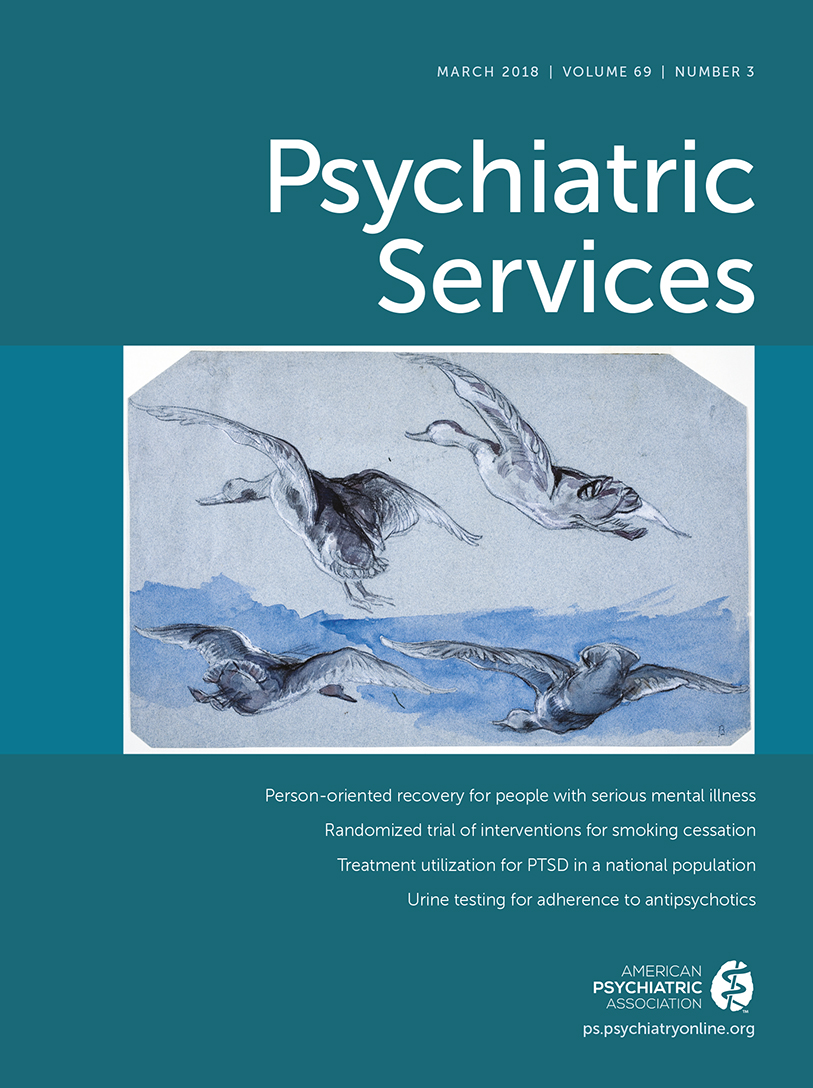Past-Year Treatment Utilization Among Individuals Meeting DSM-5 PTSD Criteria: Results From a Nationally Representative Sample
Abstract
Objective:
Little is known regarding treatment utilization among individuals meeting DSM-5 criteria for posttraumatic stress disorder (PTSD).
Methods:
Data were analyzed from the third wave of the National Epidemiologic Survey on Alcohol and Related Conditions, a nationally representative sample using DSM-5 criteria.
Results:
Factors related to increased odds of PTSD treatment utilization for individuals meeting lifetime criteria included some college education versus less than a high school degree (odds ratio [OR]=3.17), having health insurance versus no insurance (OR=2.86), having a comorbid phobia disorder versus not having a phobia disorder (OR=1.36), and greater PTSD symptom count (OR=1.11). Older age (OR=.40), identifying as black or Asian versus white non-Hispanic (OR=.70 and OR=.28, respectively), and greater social functioning (OR=.98) were associated with decreased odds of PTSD treatment utilization.
Conclusions:
Results highlight factors that may be useful in identifying population subgroups with PTSD that are at risk for underutilization of services.



